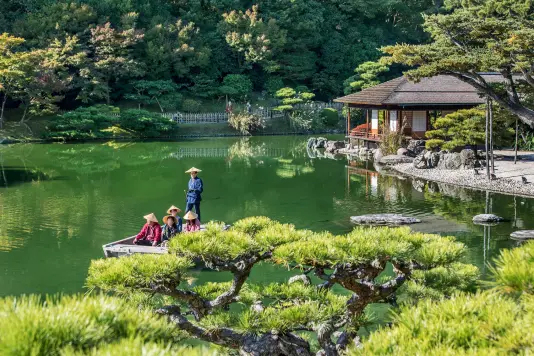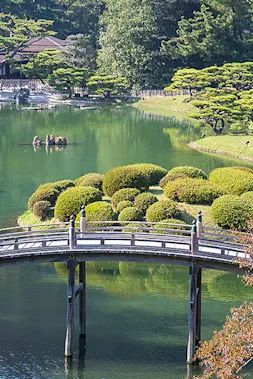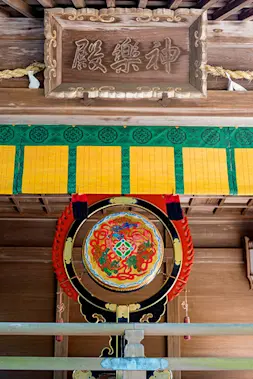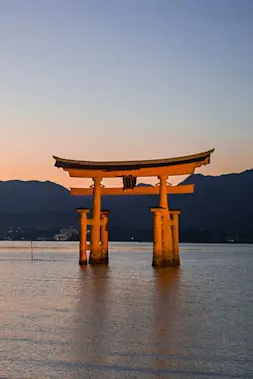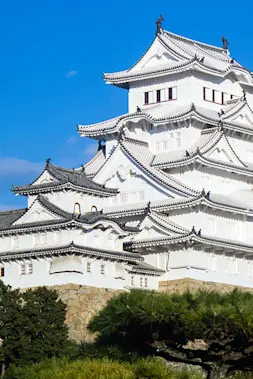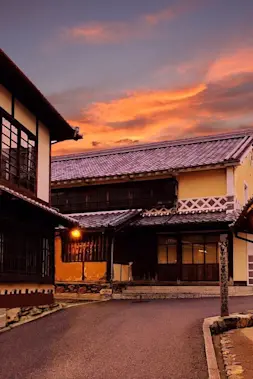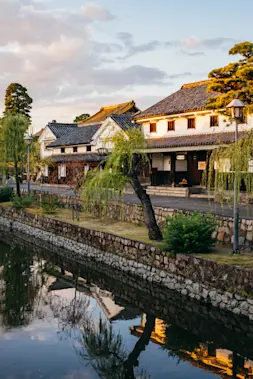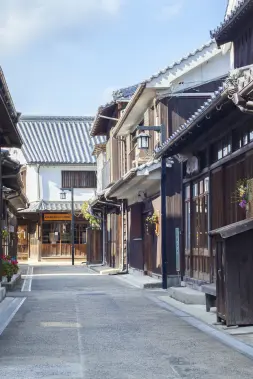History
Well Worth the Climb - Kotohira-gu Shrine with a View

-
- DESTINATION NAME
- Kagawa
-
- RELATED TAGS
-
- LAST UPDATED
- 09 January, 2020
At first glance, Kotohira strikes me as just another small town in the Japanese countryside. But as it turns out, this township of 10,000 people boasts not just one, but two historic gems.
Located in Kagawa Prefecture, the town is best known as the site of Shikoku’s largest and most popular shrine complex, the Kotohira-gu Shrine, and is home to Kanamaru-za, or the Konpira Grand Theater, the oldest surviving kabuki theater in Japan, The Konpira Grand Theater (also known as Kanamaru-za).
Kotohira-gu Shrine, referred to affectionately as “Konpira-san,” is a Shinto shrine and sacred pilgrimage site for many Japanese people. Located halfway to the top of the 521 meter Mt. Zouzu, the shrine stands at the end of a long, stair-clad path consisting of 1,368 stone steps in total - 785 to the main shrine, and another 583 to the inner shrine.
Yikes!
Admittedly, it’s been awhile since my last visit to the gym, so I hope that Omononushi-no-Mikoto, the patron deity at Konpira-san, will smile down on me as I attempt the arduous climb!
Omononushi-no-Mikoto, a spirit associated with seafaring, is also referred to as the Buddhist deity Konpira - hence the shrine's double name. Though no one knows exactly when Konpira-san was established, the shrine has been an object of veneration for many hundreds of years, and in particular held special significance for Emperor Sutoku (1123–1142), the 75th emperor of Japan. Pilgrimages to Konpira-san became popular in the Muromachi period (1336–1573) and even now, hundreds of visitors per day climb the steps of Mt. Zouzu to pay their respects.
Today, however, it’s my turn to make the pilgrimage, and although 1000-plus steps are no mean feat, I’m eagerly anticipating the sweeping panoramic views promised to those who reach the top. The hike starts from a bustling shopping arcade filled with souvenir shops, and restaurants selling local cuisine—including the much revered Sanuki udon – a type of udon noodle popular in the area. Further on, peddling treats to passersby from under large white parasols, I find five traditional sweet vendors descended from families permitted to trade within the sacred grounds of the shrine.
After that, I begin the 785 steps climb which will take me past several auxiliary shrine buildings and museums on my way to the main hall.
The hike is not all stone steps and picturesque views, however. On the way up, I find myself passing a plethora of souvenir stores and even a sake museum (the Kinryo Sake Museum) to duck into when my legs need a rest. Additionally, I find many important cultural properties located along the route to distract me from my fatigue, including the ornate wood carvings and grand structure of Asahi-no-Yashiro Shrine (Shrine of the Rising Sun), built in 1837 in dedication to Shinto sun goddess Amaterasu. Stopping here, I marvel at the many beautiful paintings and sculptures displayed in the omote-shoin (formal drawing room), oku-shoin (inner drawing room) and houmotsu-kan (treasure house).
But I’m not going to lie - trudging up the seemingly never-ending 785 steps certainly feels like a mission, and I panted a sigh of relief upon I reaching the Oomon Gate at the 365th step. The gate marks the entrance to the spacious grounds of the main shrine, and signals the end of the climb. I make my coin donations, say my prayers, and proceed to wander around the peaceful area.
I’m surprised to see images and sculptures of dogs scattered around the grounds. One of the priests explains that they’re affectionately called Konpira Inu, and represent the dogs that, once upon a time, were substitute pilgrims for their owners who could not visit the shrine personally. Right next to the main shrine, the ema pavilion, or place for depositing wooden placards inscribed with wishes, is decorated with maritime-themed exhibits, showing the shrine’s strong connection to fishermen and sailors. I wander over to one of the many lookout points, and enjoy a panoramic view of the Sanuki plains and Mt. Iino, the dormant volcano known as “Sanuki Fuji.” Today is a particularly clear day, so I can even see the lovely Seto Inland Sea glittering in the distance.
My serene state of mind is momentarily interrupted as I remember I have only completed about 40 percent of the climb!
Summoning a second wind, I begin my ascent up the remaining 583 steps which ascend along a forested path to Izutama-jinja Shrine. This is definitely the most difficult part, as I am already tired from the initial climb, and there aren’t many stops and distractions along the way. It’s also the quietest part as it is rare for visitors to venture further than the main shrine. As a result, however, this leg of the journey feels the most spiritual, as I climb step after step deep into the forest.
Finally, exhausted and thoroughly out of breath, I reach the modest Izutama-jinja Shrine at the very top. To some, this little shrine may seem underwhelming after such an epic climb, but to me it was a gentle reminder that it’s the journey and not the destination that matters. If meditation is your thing, this small, isolated retreat high on the mountain provides the perfect spot. Personally, I’m busy contemplating the magnificent view, and am certain it will be well worth tomorrow’s sore legs.
Descending the 1,368 steps of Kotohira-gu Shrine is obviously much easier than the ascent, but I’m making short work of it because I want to get to my next destination before the daylight vanishes.
Located south of the approach to Kotohira shrine is Kanamaru-za, or Konpira Grand Theater – Japan’s oldest surviving kabuki theater, built in 1836. Though regularly used as a playhouse and a movie theater until the middle of the 20th century, in modern times stars of the kabuki world perform at Kanamaru-za every spring.
During the off season, the theater allows visitors to explore the building and its many fascinating idiosyncrasies. Like a kid in a playground, I sit in the lantern-lined audience hall on the traditional tatami (straw mat) seating, go backstage and pull levers to move the manually-operated rotating stage, go further backstage to check out the dressing rooms, and jump in and out of the wooden trapdoors used by actors to dramatically enter and exit during performances. All the while, I imagine the heart-warming dramas, love stories, moral conflicts, and tragedies that have moved audiences at this very spot for hundreds of years.
Photographs by Jason Haidar & Text by Celia Polkinghorne
RELATED DESTINATION
Kagawa
This is an area with many islands, including Naoshima and Teshima, which are famous for art. It also is home to the tasteful Ritsurin Garden. Kagawa is also famous for its Sanuki udon, which is so famous it attracts tourists from throughout Japan. The prefecture is even sometimes referred to as “Udon Prefecture.” [Photo : “Red Pumpkin” ©Yayoi Kusama,2006 Naoshima Miyanoura Port Square | Photographer: Daisuke Aochi]
